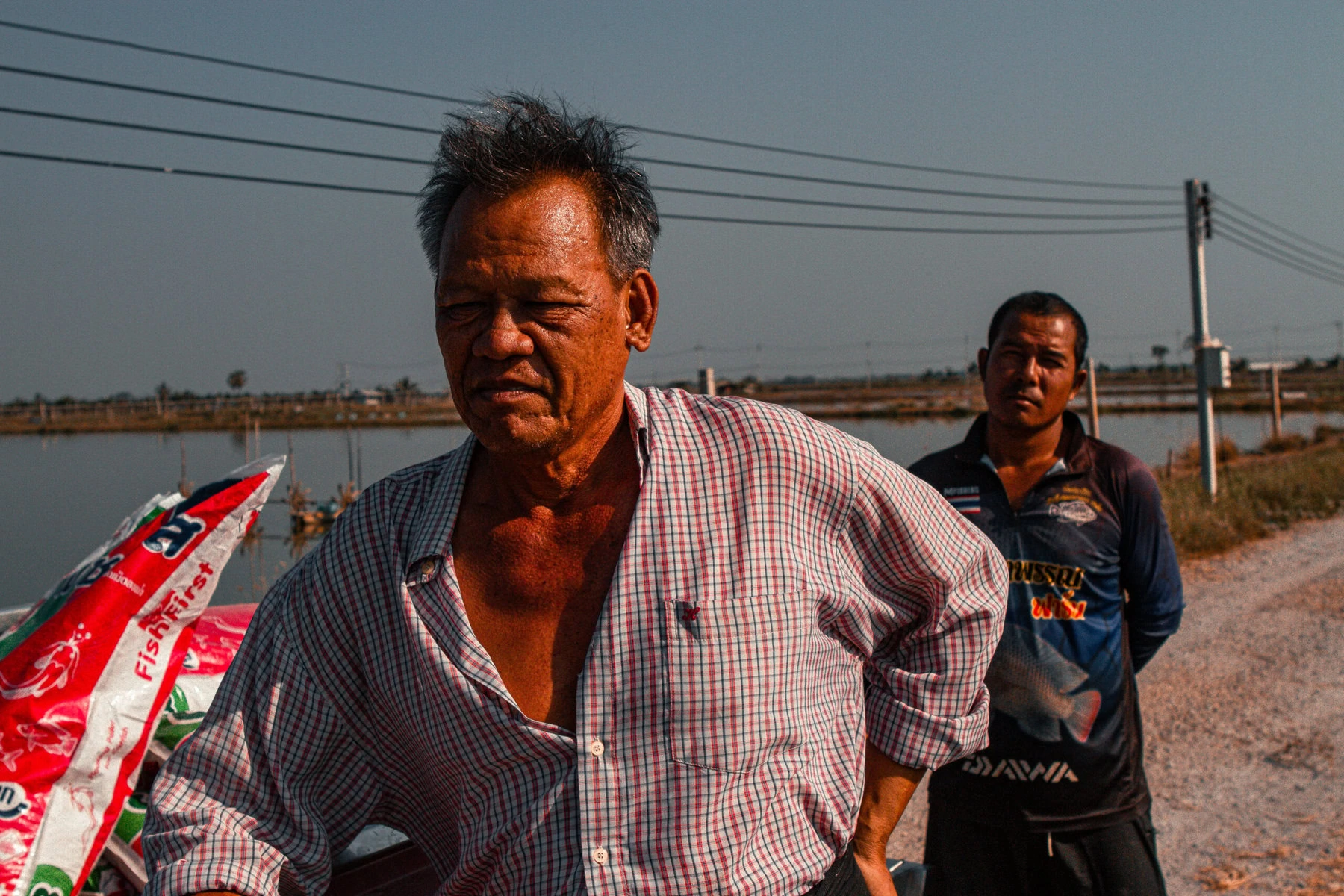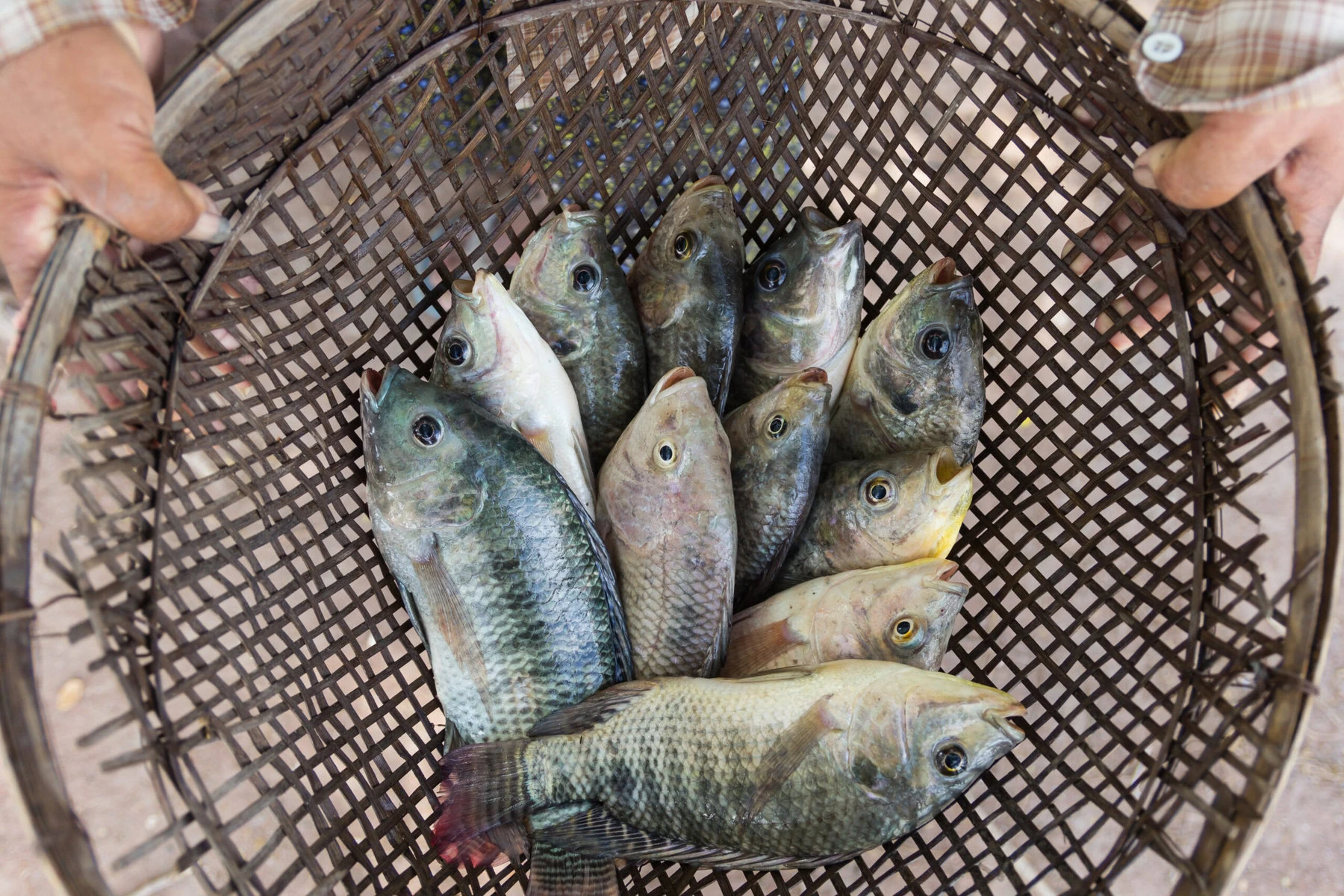As Somporn explains, the fish’s feces help to make the water balanced and are consumed by the shrimp. The processing, he says, isn’t complicated; he’s able to sell the shrimp in just two months and the fish in five to six.
“In the past the old generation fed the fish and shrimp separately, but it’s not good money and slower for profit,” Somporn says. “But more of the new generation are mixing them together, which is good profit and good results and that’s why we do it this way.”
Thailand’s fishing industry plays a big role in the country, both economically and socially. The thousands of miles of coastline that span 24 provinces in the Gulf of Thailand and the Andaman Sea provide a rich source for local fishermen to catch millions of metric tons of fish and marine life each year. This crucially contributes to jobs, income and livelihoods for hundreds of thousands of people. The accessibility of seafood also means fish is a cheaper option and protein source for many Thais compared to chicken, pork and beef, especially for those living in coastal areas.


Thailand’s economy is also heavily dependent on exports, accounting for over half of the country’s GDP. The country’s shrimp exports produce billions of dollars for the local economy, despite the industry being affected by disease in the last decade. Overall, Thailand’s agriculture, forestry and fishing industry contributes to over eight percent of the country’s GDP. Around 1.5 percent of that comes from the fisheries industry as of 2021, data shows.
But some aquaculture experts hope more Thai fish farmers will fully incorporate the IMTA model within their farms in the future to increase revenue.
Crushed by negative news?
Sign up for the Reasons to be Cheerful newsletter.
Of course, the reasons to practice IMTA go beyond the financial. Dr. Pitchaya Chainark, an expert in coastal aquaculture at Kasetsart University, sees IMTA as a way to increase both Thailand’s fishing industry’s GDP and farmers’ income as well as create a balance of conservation and sustainable use of aquaculture resources.
“In Thailand there are not many [practicing] right now, as many prefer to do polyculture. IMTA is different, it is like a food chain. The species should have symbiosis and help each other,” she says.


In an ideal IMTA system, a higher trophic species, such as a fish, would be paired with suitable middle trophic species, and then lower trophic species such as plants and invertebrates. The cycle would see the plants consume waste, such as fish feces, sediments and uneaten feed to boost their own growth. The trophic species would be grown in conjunction with each other, providing the farmer with more seafood to sell.
In China, IMTA has already provided an environmentally sustainable and profitable solution for nearly two decades. Professor Jianguang Fang of the Yellow Sea Fisheries Institute in Shandong says IMTA was implemented starting in 2000, mainly to combat “self-pollution” that had come from too many intensively fed aquaculture systems in Sungo Bay, Shandong province. According to Fang, the pollution caused high levels of sediment and nitrogen in water, which can cause an excess of nutrients that can decrease the amount of oxygen in the water. Now, fish farms on Sungo Bay have implemented IMTA systems with high and low trophic species, including fish, seaweed, shellfish and abalones. Because there’s a market in China for all of the farmed species, farming this way is boosting profits.
One aquaculture multi-species system at Sungo Bay also included kelp, oysters and seaweed. The farm became more sustainable and profitable when the density of seaweed was reduced — which sped up growth — which eventually led to the farmers’ income growing by a huge 97 percent.

